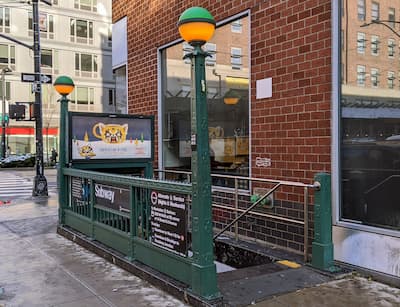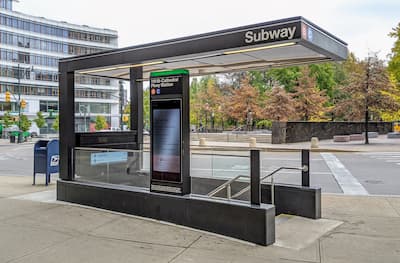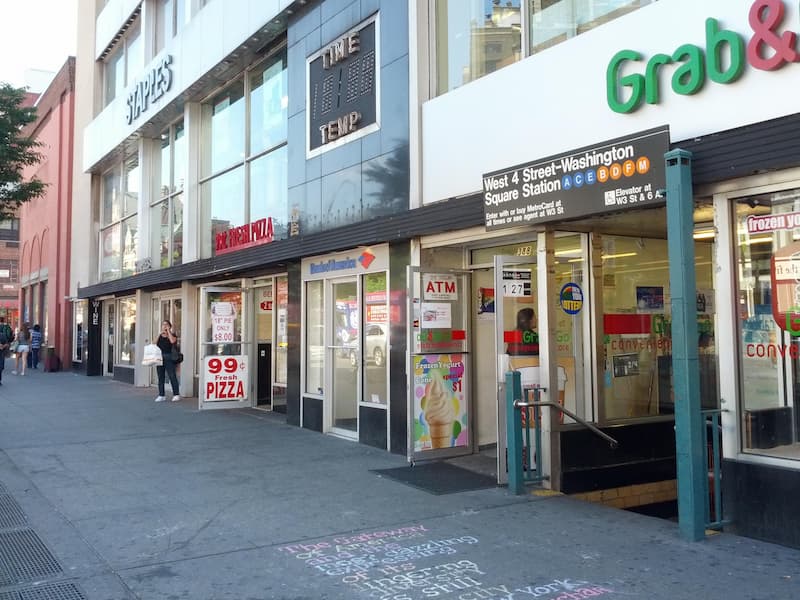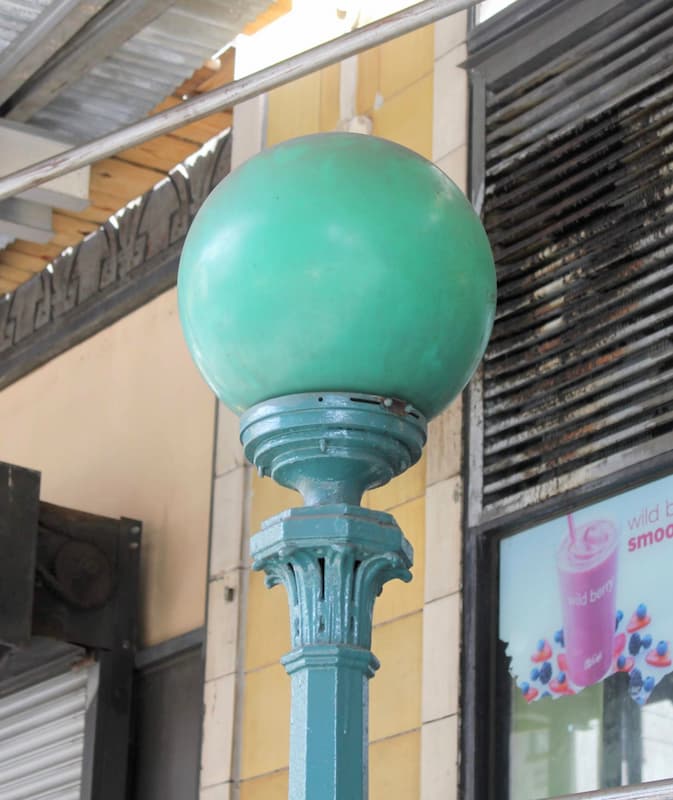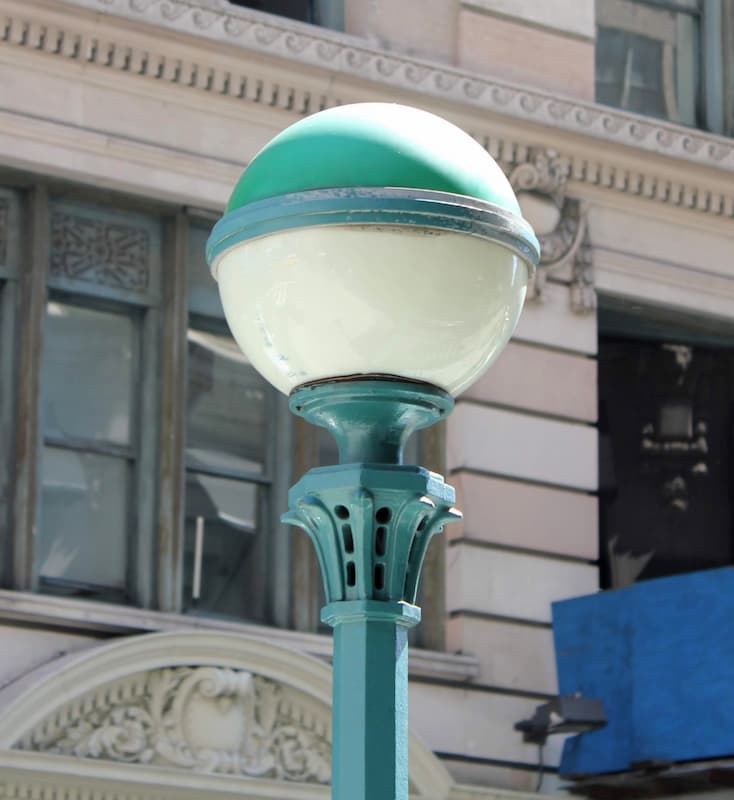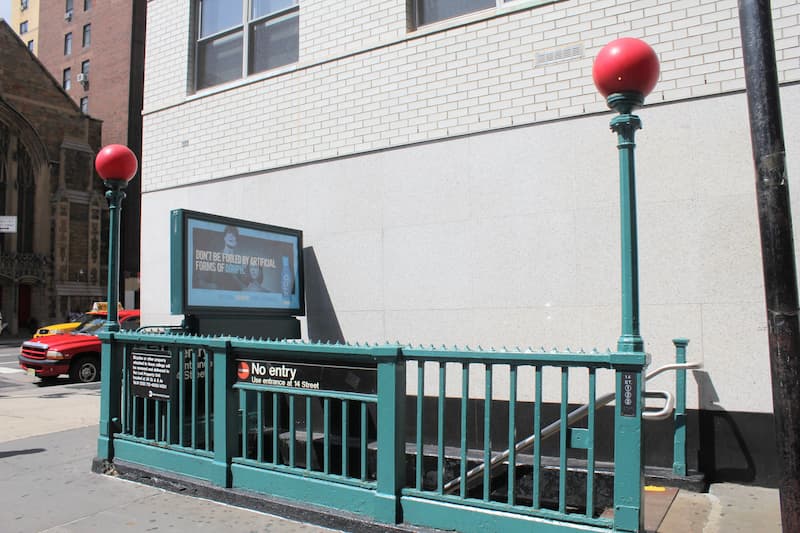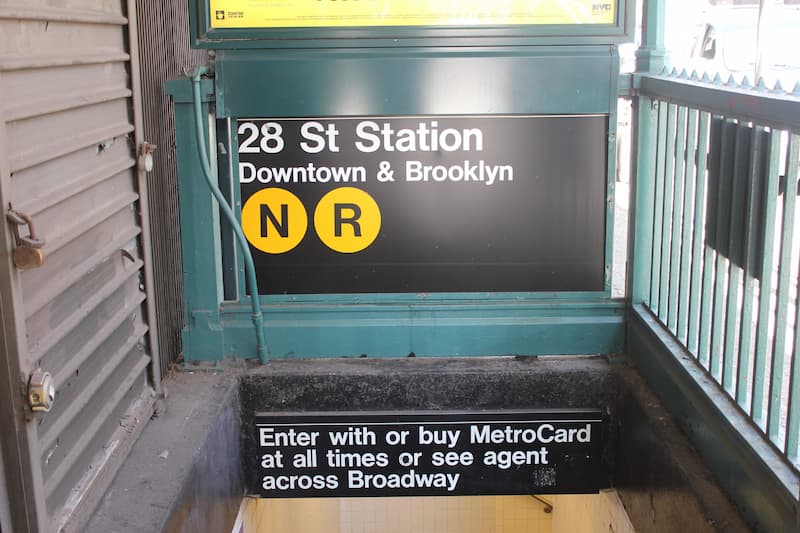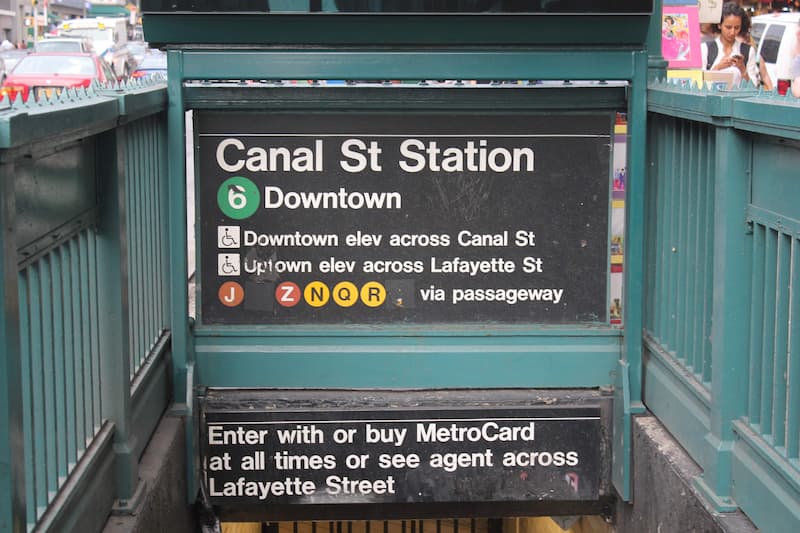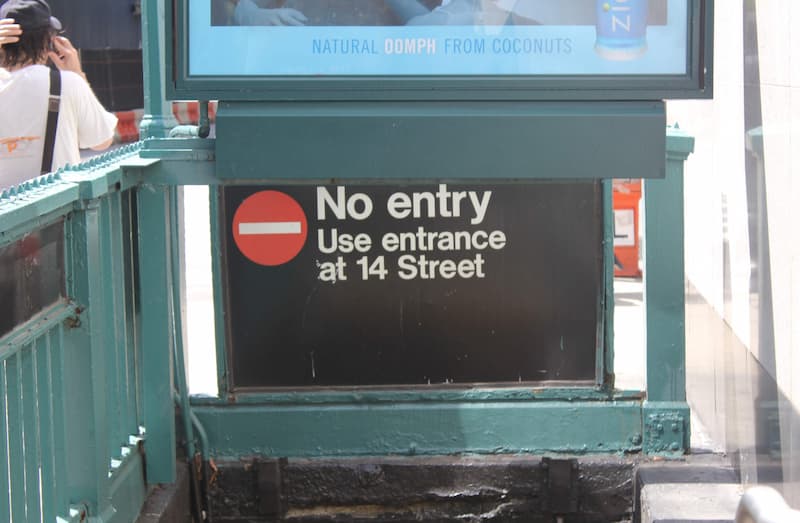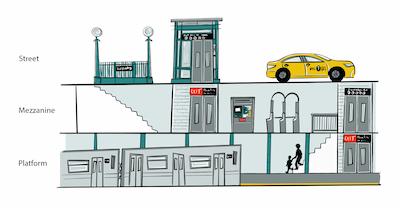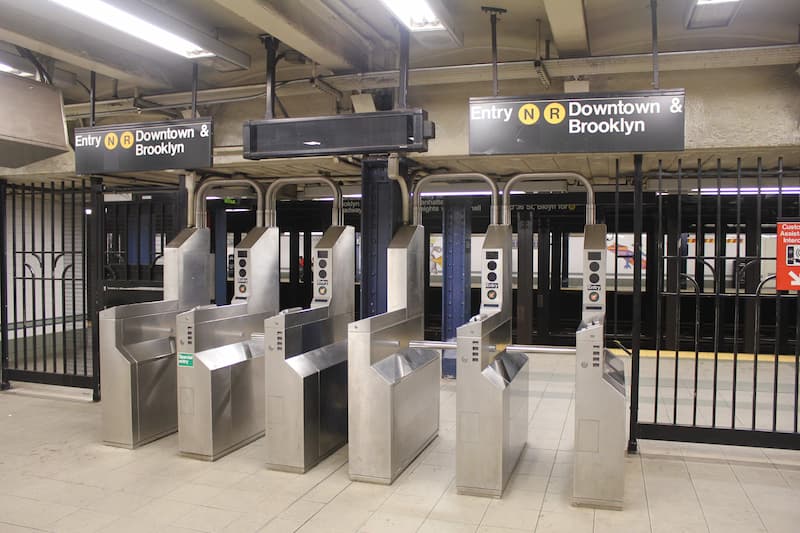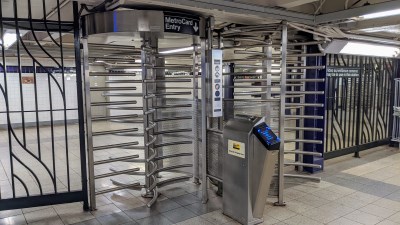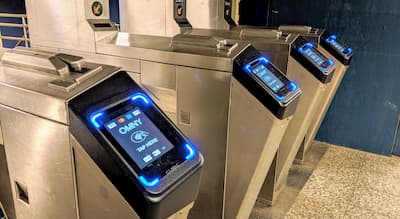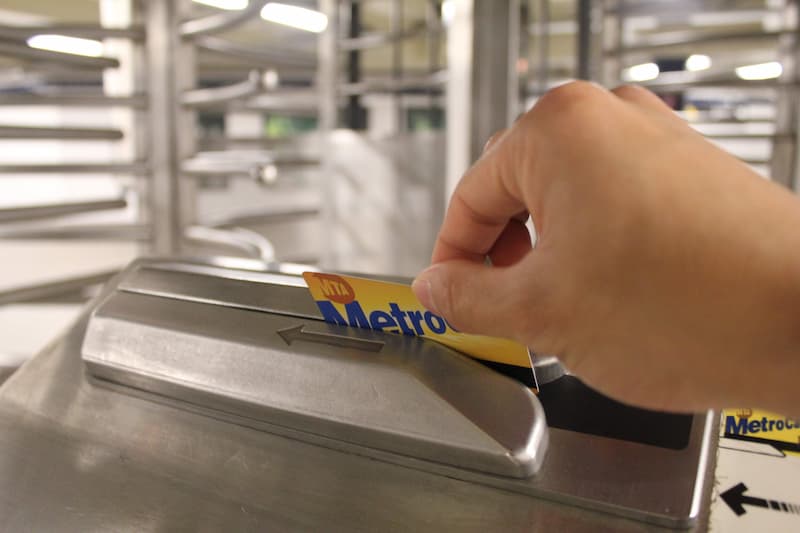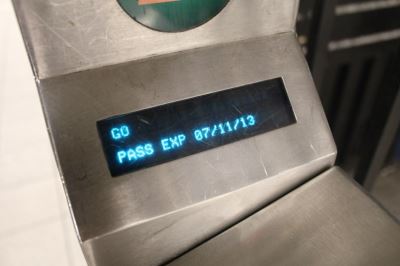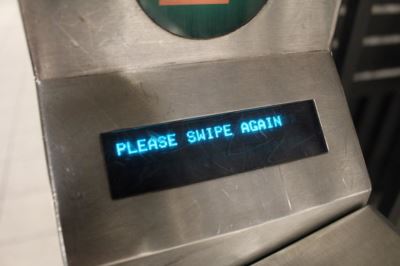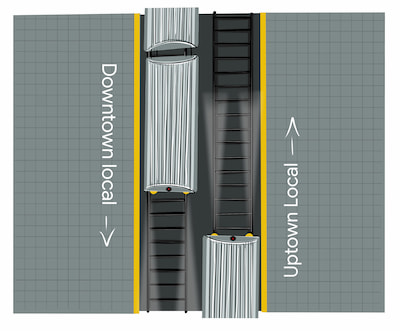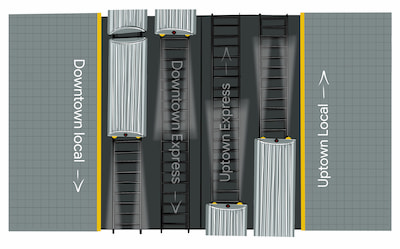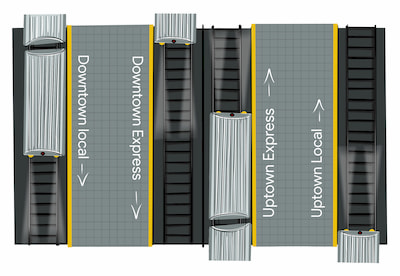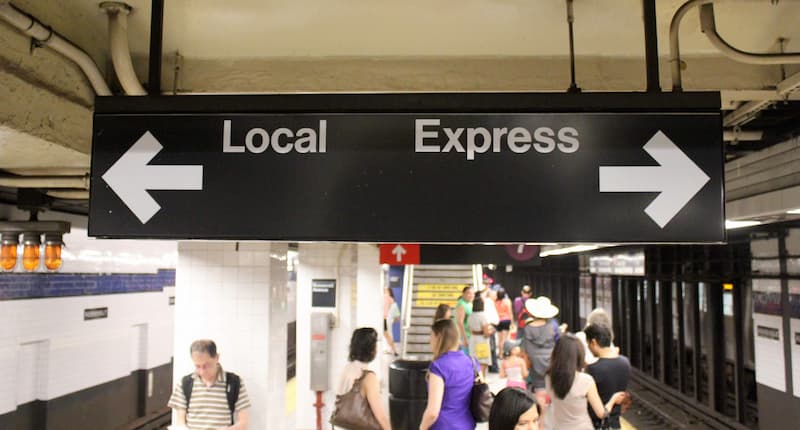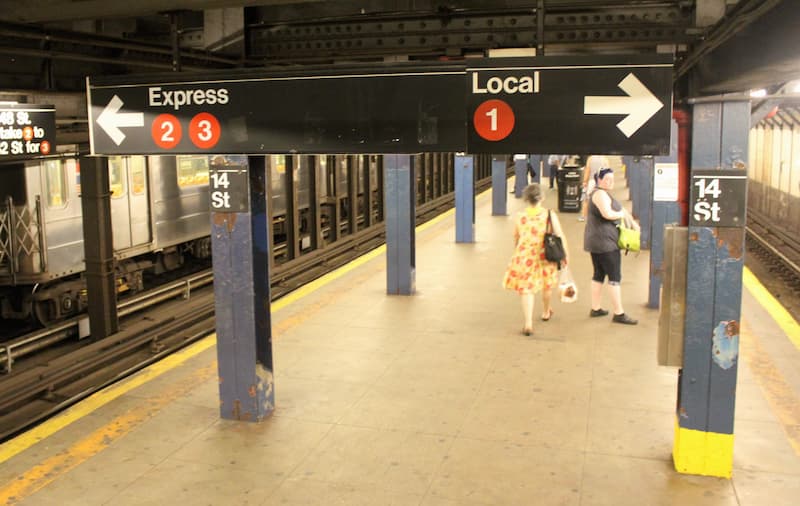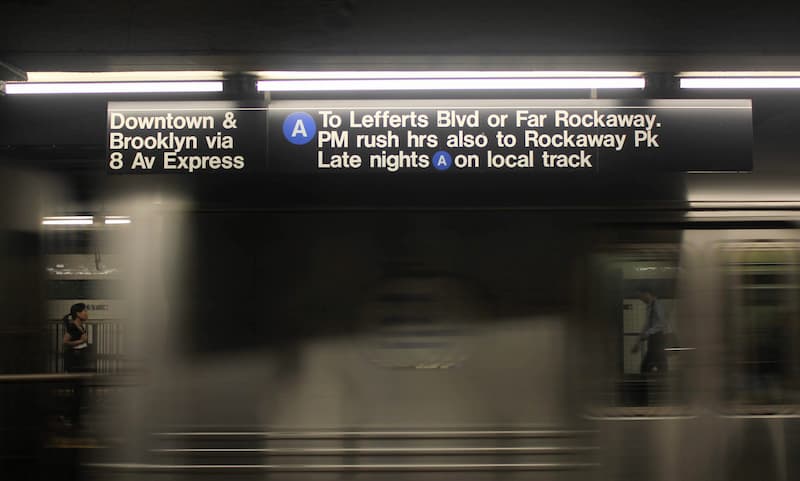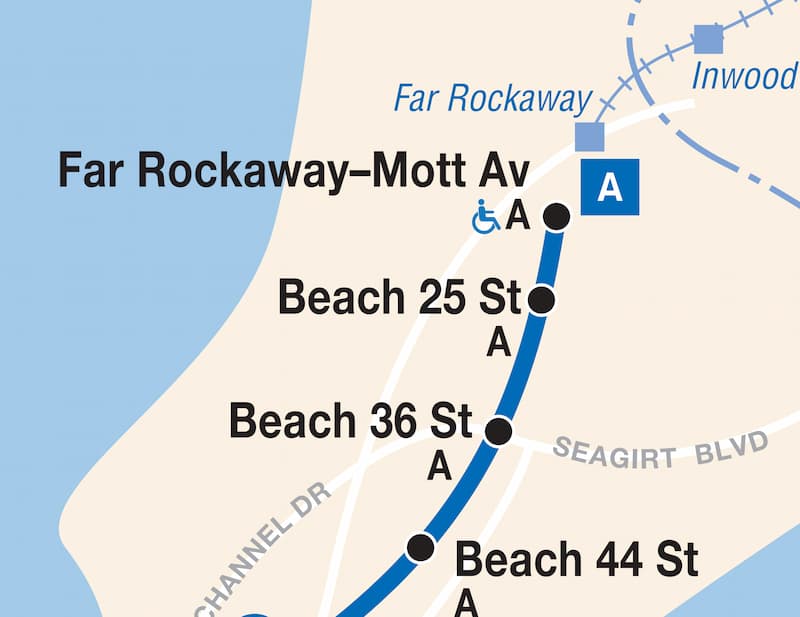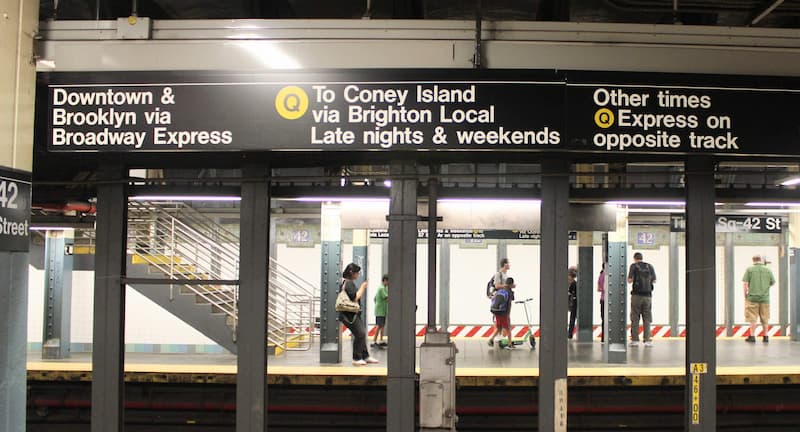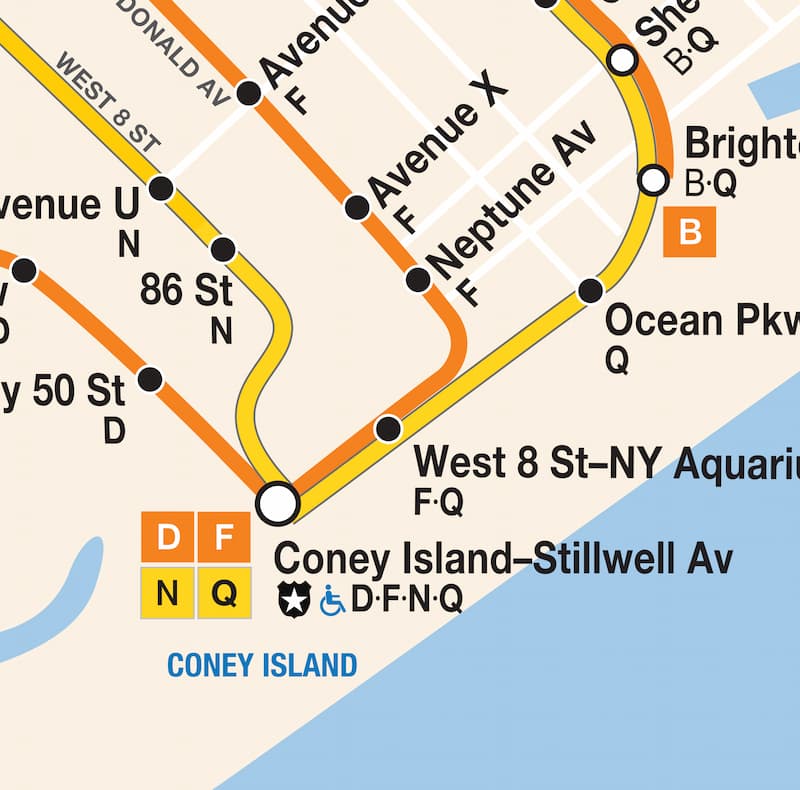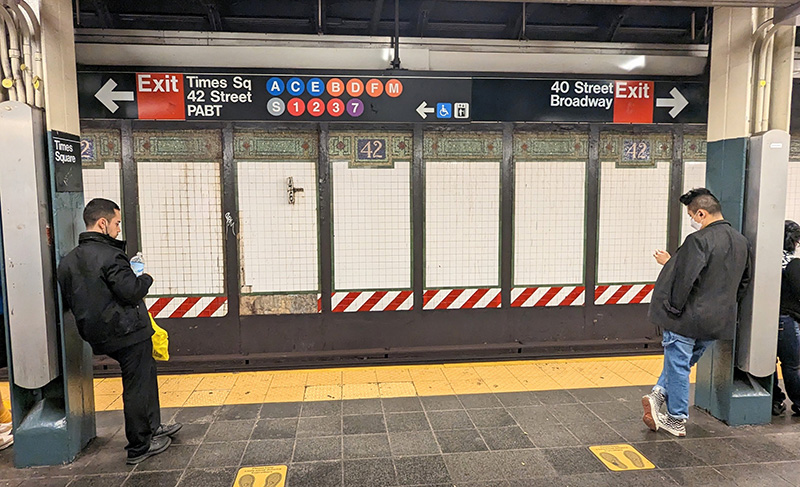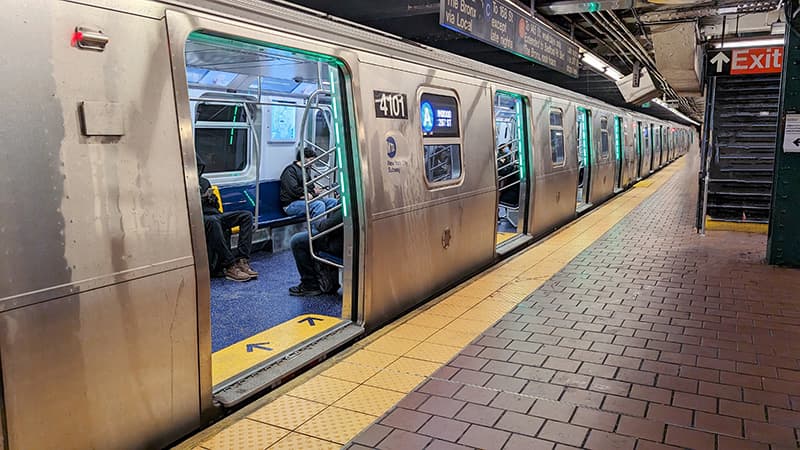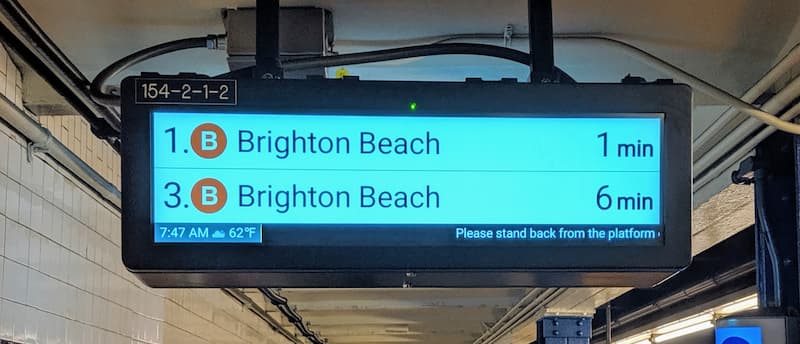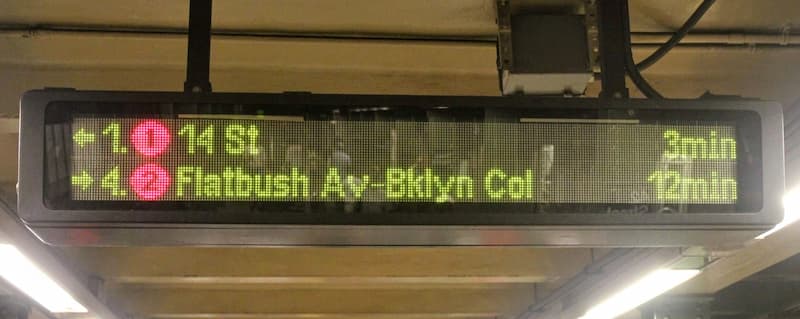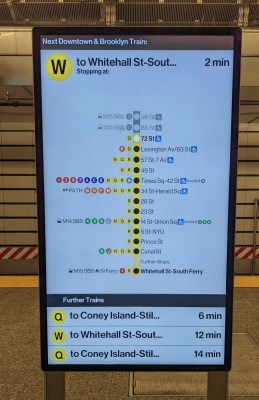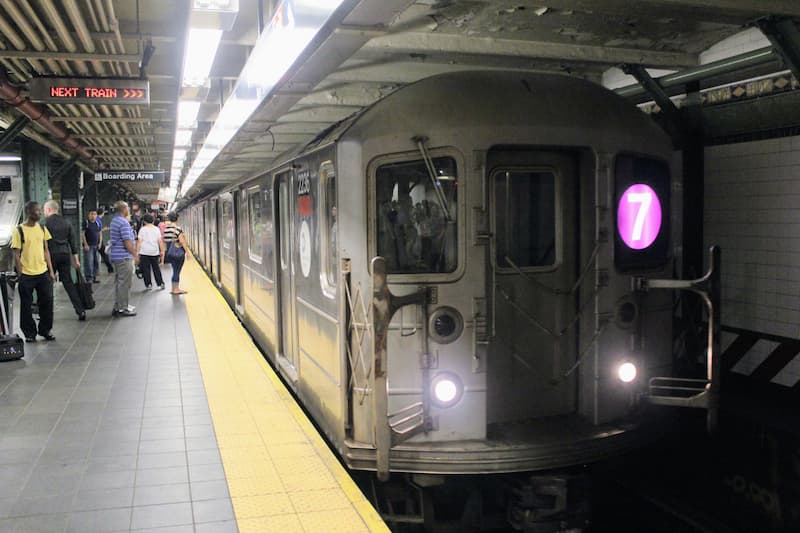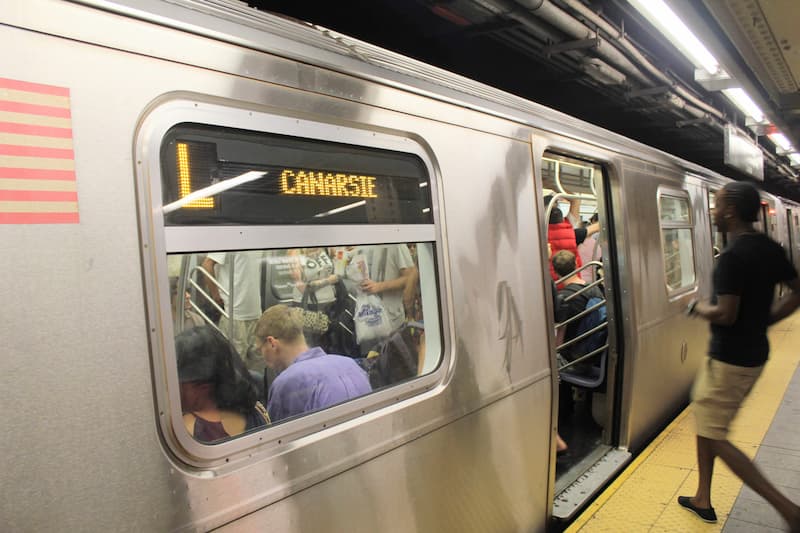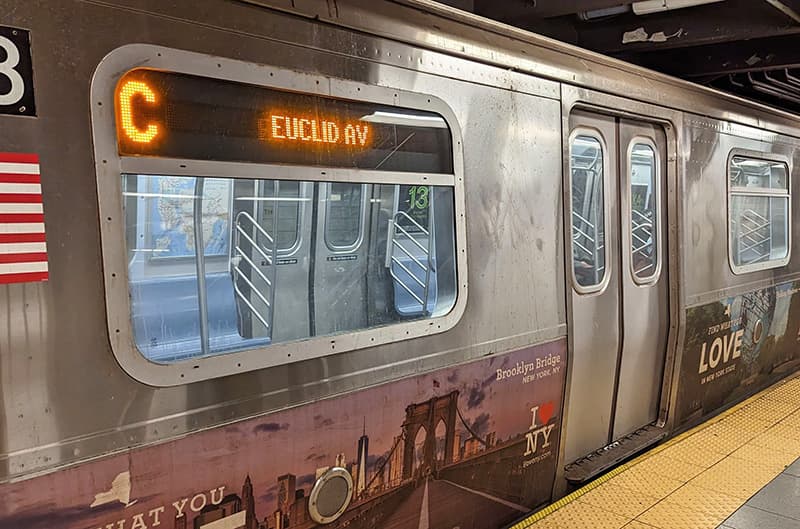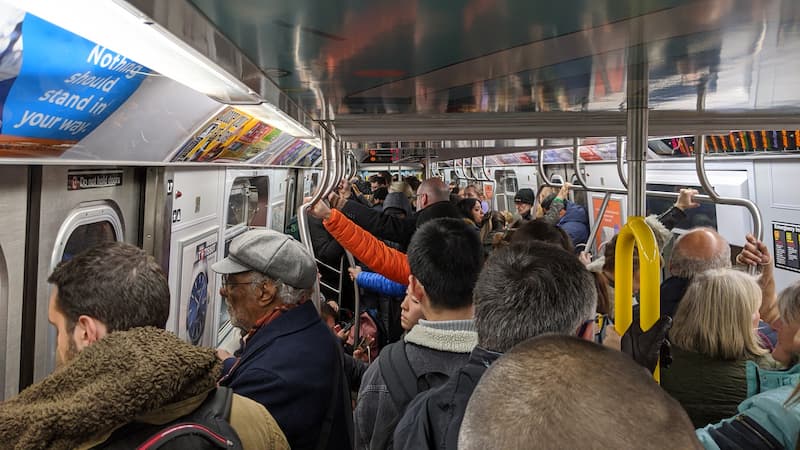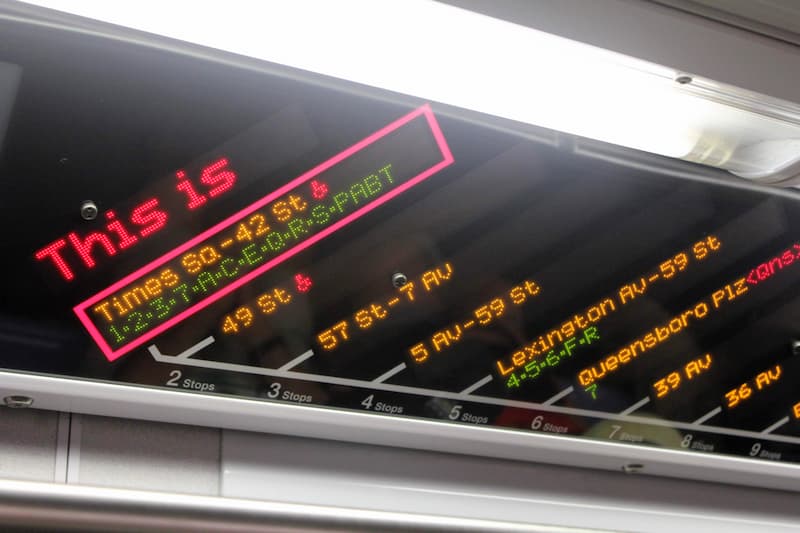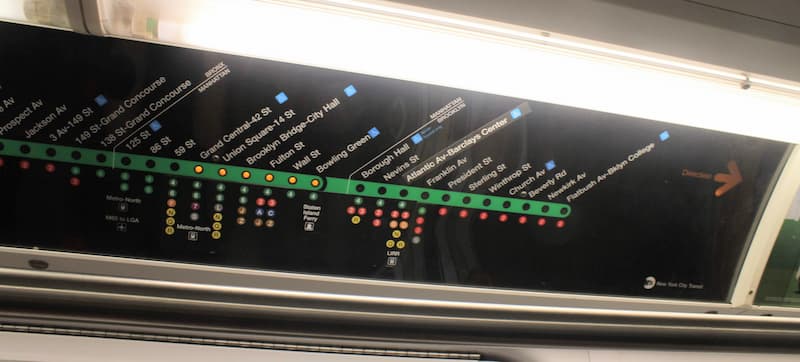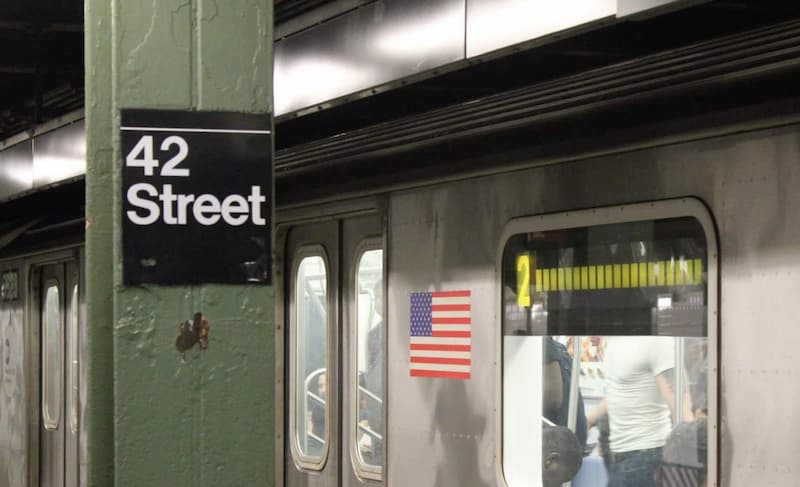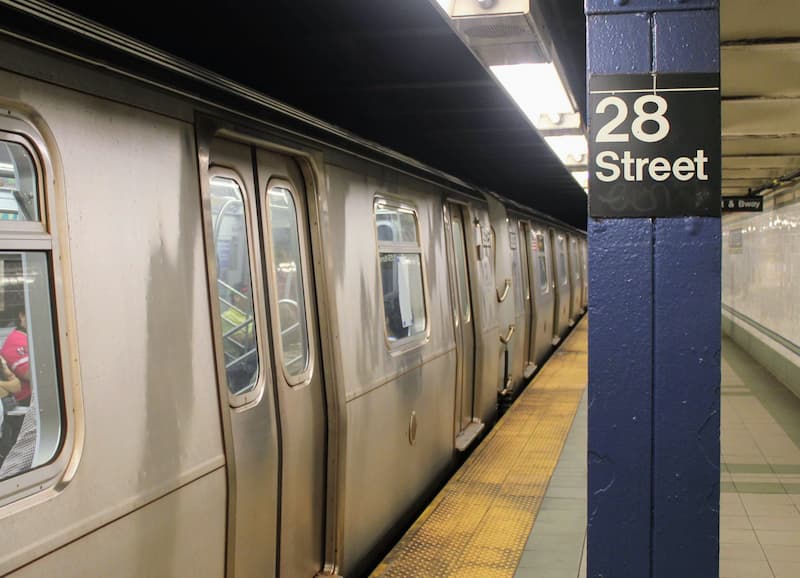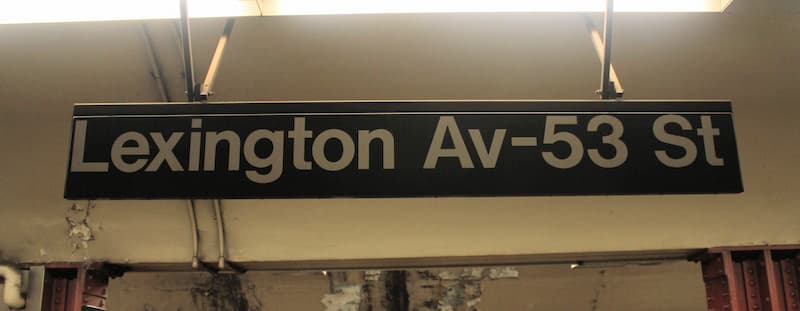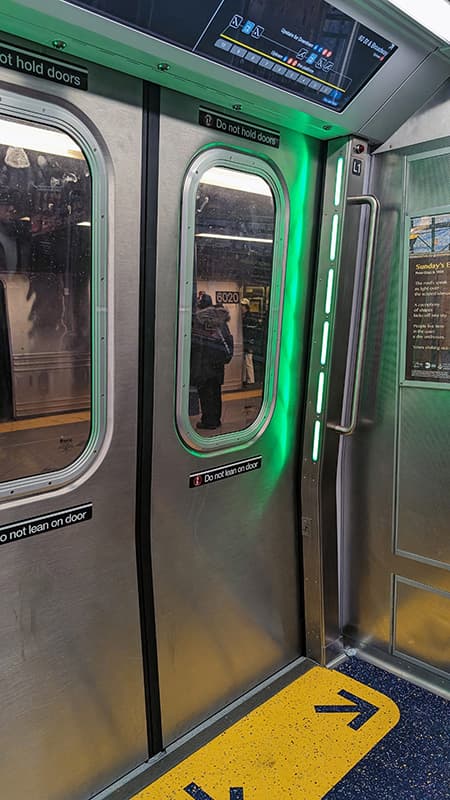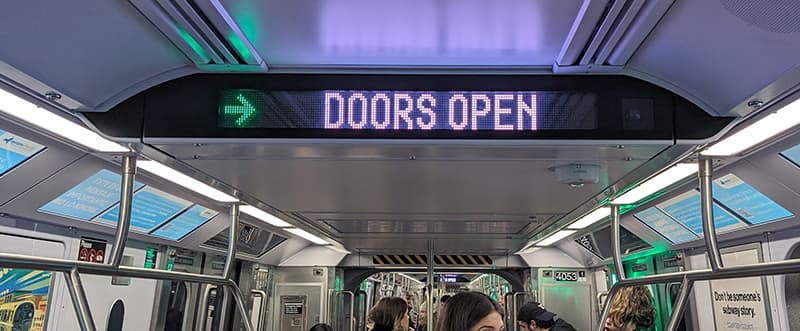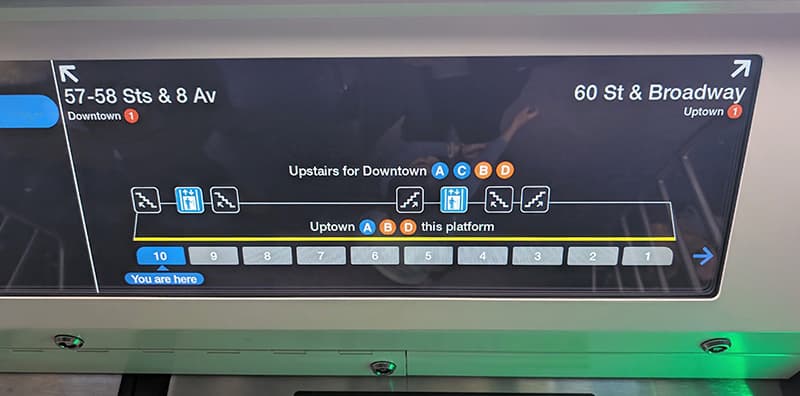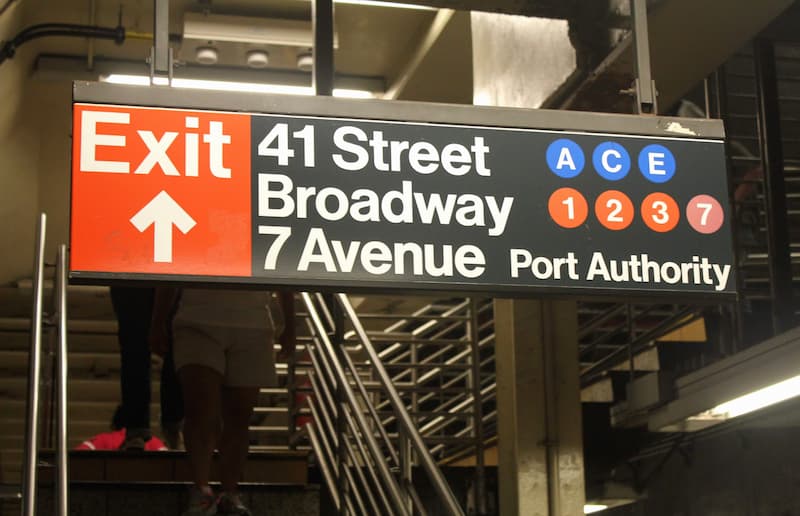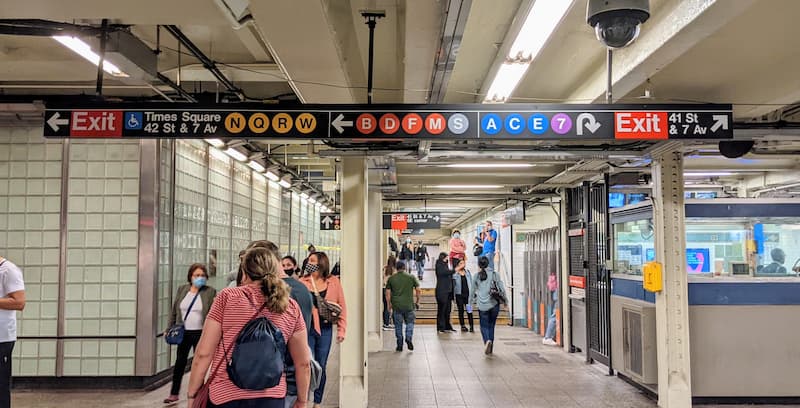A Step-By-Step Guide to Using the NYC Subway
Now that you have a basic understanding of the subway lines, services, stations, and map, let's move on to the fun part: taking an actual trip! I assume that you can plot out a general plan of how to get to your destination. This might involve deciding the following:
- Which station am I entering?
- Which station am I exiting?
- Which combination of trains should I take?
- In which direction should I take each train?
Alternatively, use a mobile application or the official MTA Trip Planner to get directions.
There are many ways to get from point A to point B. Your trip will likely involve taking a few trains and making one or two transfers. Make sure that the stations you are considering are indeed served by the trains you intend to take by looking for the single letter/number service designations below the station on the map. The most common mistake tourists commit is take an express train and then wondering why it does not stop at certain local stations.
step 1: Finding and entering the subway station
Start out with your physical map or the map on your mobile phone (or ask a local) to find the closest subway station. Sometimes it's beneficial to walk to a station that is farther away to catch a more convenient service depending on where your final destination is.
Subway station entrances come in all kinds of forms. Many are standalone entrances with their own staircases that are easily recognizable from the street:
However, some entrances are also hidden inside buildings, near business entrances, under bridges or along park perimeters so always look carefully:
Another way to recognize subway entrances is to look for the green or green-white "globe lamps" that sometimes surround the subway entrances:
Because subway trains are really long, a single subway station may have many entrances and exits. Not all entrances are created equal. Exit-only staircases are marked with a solid red globe.
You can't enter this station through these stairs; you have to find the other entrances instead.
More importantly, some entrances can only be used to access trains in certain directions. This is clearly stated on the black sign above the entrance.
This is an entrance to the 28th St. station on the  and
and  service. However, you can catch the
service. However, you can catch the  and
and  trains only in the downtown direction from this entrance. For uptown service, you have to find the corresponding uptown entrance. Because subway lines generally run underneath the avenues in Manhattan, you can often find uptown train entrances on the east side of the avenue and downtown train entrances on the west side. (Imagine the trains running on the same side of the avenue as the cars above them.)
trains only in the downtown direction from this entrance. For uptown service, you have to find the corresponding uptown entrance. Because subway lines generally run underneath the avenues in Manhattan, you can often find uptown train entrances on the east side of the avenue and downtown train entrances on the west side. (Imagine the trains running on the same side of the avenue as the cars above them.)
In this example, you can catch the Downtown  train from this Canal St. station entrance. You can also catch the
train from this Canal St. station entrance. You can also catch the  ,
,  ,
,  ,
,  , and
, and  trains (in all directions) from this entrance via a free passageway (tunnel).
trains (in all directions) from this entrance via a free passageway (tunnel).
In case you didn't notice the red globe I mentioned earlier, this staircase is an exit only. You cannot enter the subway from here; you have to find another entrance to this station nearby.
Step 2: Going through the turnstile
Each subway station has a very different layout. They differ in their size, floor plans, cleansiness and style. Some are even above the street with elevated platforms, but most of the time they are below ground. At most stations, you will find the turnstiles on the "Mezzanine" level right under the street.
Before entering the subway system, you have to swipe your MetroCard or OMNY-compatible device/credit card at the turnstile:
Before entering the turnstile, be very sure that this is the right place to enter. Notice in the picture above that this is the entry only for the downtown and Brooklyn-bound train. For uptown service, you have to find another entrance. In some stations, once you swiped in and entered, it's impossible to get to the other side of the platform without leaving the subway system again. This means paying a second time or waiting 18 minutes for those with an Unlimited Ride MetroCard!
Besides the turnstile, you can also enter a station through these revolving doors:
Both the turnstile as well as the revolving door act both as an entrances as well as an exits, so before you enter them you might have to wait for a stream of people to exit through them first. As you approach the turnstile/door, you will find a MetroCard or OMNY reader on your right side of the turnstile/revolving door. Have your MetroCard or mobile phone/credit card ready as you approach the reader. (New Yorkers hate it when people fumble for their card while holding up the line behind them.)
For OMNY readers, simply tap your smart phone/smart watch/credit card at the reader to unlock the turnstile:
For MetroCards, here is how to swipe your card against the card reader:
Make sure the black magnetic stripe faces down and toward you. Once you swipe the card successfully, you'll hear a discernible click sound, the display tells you that you can go and will also display the remaining value balance or the Unlimited Ride card's expiration date. (To be exact, the Unlimited Ride time window will expire at 11:59 p.m. on the displayed date.)
If the machine can't read the card, it will ask you to swipe the card again. Most tourists fail because they swipe too slowly. Imagine holding the card in your hand, locking your arm, and just walking through the turnstile at regular walking speed. If you fail to swipe properly, don't try your luck at another turnstile. It is important to keep trying to swipe at the same turnstile. Trying at another turnstile might render your card useless for 18 minutes because it thinks you have already used it.
A quick caution about the revolving doors: these doors are already locked into a position that allows you to simply go through them by pushing on them. There should never be a need to pull on the door to "turn it into a position for you to enter" -- doing so will actually count as a turn and you end up wasting a fare.
Once you enter the system, you can put your MetroCard away. You won't need it to exit.
Step 3: Finding the right platform
By now, you should already know which train as well as the direction of the train you want to take (uptown, downtown, Manhattan-bound, Brooklyn-bound, etc.). Knowing this allows you to follow the large black signs with the arrows to guide you to your platform:
All directional signs have arrows. These signs tell you in which direction to walk to get where you want to go. The arrow applies to the entire sign - so in the picture immediately above, the sign tells you to go downstairs to catch the Uptown  ,
,  ,
,  , and
, and  trains as well as the Uptown & Bronx-bound 6 train
trains as well as the Uptown & Bronx-bound 6 train
Platform layouts are going to differ at each subway station. However, there are several layouts that are commonly found, so let's take a look at them. For local stations that service only one subway line, you'll often find one of these two configurations:
The local trains travel on the right side (like regular traffic on the streets above them), with the local platform to enter them along the right side of the direction of travel. Sometimes you have express tracks in the middle that allow express trains to overtake the local trains, but these express trains will not stop here.
On the other hand, stations where both local as well as express trains stop, often have this configuration:
Here there is a designated uptown platform as well as a designated downtown platform where each side of each platform will give you local vs. express access. Note that the schematics above are simplified and assume uptown/downtown directions while you are in Manhattan. It works conceptually the same in other boroughs with local trains tracks generally being on the outside and express trains tracks on the inside.
On a given platform, there are also signs that tell you on which side of the platform to stand:
Remember that I only described some of the common layouts above, and that each station really does have different floorplans. To confirm that you are standing at the correct platform on the correct side, look for the large black signs that are parallel to the train's track and do not have any arrows. They look like this:
As you can see, these signs tell you the service designation ( ), the train's direction (downtown), but more importantly the name of the very last station of the train. By looking at the very last station of a particular train on the map, you can determine whether that train is going in the right direction for you.
), the train's direction (downtown), but more importantly the name of the very last station of the train. By looking at the very last station of a particular train on the map, you can determine whether that train is going in the right direction for you.
Remember that signs with arrows do not indicate the platform you are standing on. This confuses tourists all the time. They see the following sign and think that all these trains ( ,
,  ,
,  ,
,  ,
,  ,
,  ,
,  ,
,  ,
,  ,
,  ,
,  ,
,  ) stop here:
) stop here:
Instead, these signs are telling them to keep walking to the left to get to those trains.
Step 4: Waiting for the train
Most of the time, a New York subway train consists of a series of passenger cars. Most trains have 10 cars which make them long enough to cover an entire platform.
However, the  ,
,  ,
,  ,
,  have only 8 cars, while the
have only 8 cars, while the  train is especially short, so you want to stand in the middle of the platform for those. While there are emergency doors between the cars that you could open, it is illegal and very dangerous to move between them. In 2024, a new "open gangway" subway train was also introduced on the local
train is especially short, so you want to stand in the middle of the platform for those. While there are emergency doors between the cars that you could open, it is illegal and very dangerous to move between them. In 2024, a new "open gangway" subway train was also introduced on the local  service which has open walkways between cars allowing you to walk almost half of the train's length while the train is in motion.
service which has open walkways between cars allowing you to walk almost half of the train's length while the train is in motion.
Although trains do run on set schedules, it probably suffices to just go down into the station and wait for the next train, which should arrive anywhere between 2-5 minutes during rush hour and 10-20 minutes at night. The subway system runs 24 hours per day and never closes (You've heard that New York never sleeps, haven't you?). With some exceptions you could catch nearly any train at 4 a.m. if you wanted to, although the wait might be long.
Most stations are equipped with displays that indicate how long you have to wait for the next train(s):
These displays tell you the order of trains (1st, 2nd, 3rd, 4th, etc.); the train service ( ,
,  , and
, and  ); the last station and, hence, direction of the train (Brighton Beach, 14th St., Flatbush Ave.); and the estimated arrival time. Some displays also tell you the side of the platform you should expect the train to arrive on (the 14th St.-bound train on the left, the Flatbush-bound train on the right).
); the last station and, hence, direction of the train (Brighton Beach, 14th St., Flatbush Ave.); and the estimated arrival time. Some displays also tell you the side of the platform you should expect the train to arrive on (the 14th St.-bound train on the left, the Flatbush-bound train on the right).
The first line always displays the next approaching train (1.), whereas the second line will alternate between all subsequent trains (2., 3., 4., etc.). If the first line turns yellow and is blinking, it means that the train just entered the station.
Oftentimes, you can also find these large displays showing the expected time of arrival for the next train along with the next stations the approaching train will go to next:
Step 5: Entering the train car
Because a single platform can service different trains, you want to confirm that an approaching train is indeed the train you are waiting for.
Trains carry the train service designation at the front of the train:
Most trains will have the name of the service and the name of the last station on the side of the car:
Once the train car's doors open, you should also hear the conductor's announcement from inside the car (e.g., "This is a Bronx-bound 2 express train. The next stop is 72nd Street"; audio). Before you board the train, please let passengers exit first before you enter. Once you enter the car, be sure to walk all the way in to let others behind you come in as well. Trains can be very crowded during rush hour. It's normal to find yourself sandwiched between people. Also make sure to find a pole to hold on to as the train's sudden acceleration and movements can easily throw you off balance.
The next thing to do after entering a car is to look for the route map that indicates the stations you will encounter on the service. On most trains, these are LED displays indicating the upcoming stations:
Here we are at Times Square, where you can transfer for free to the  ,
,  ,
,  ,
,  ,
,  ,
,  ,
,  ,
,  ,
,  , and
, and  trains, and also walk to the Port Authority Bus Terminal (PABT). The next station is 49th St. The display keeps on updating (shifting left) as you travel.
trains, and also walk to the Port Authority Bus Terminal (PABT). The next station is 49th St. The display keeps on updating (shifting left) as you travel.
On some older trains, the route maps are static and just have tiny light bulbs:
The large lighted arrow on the end indicates the direction of travel (in relation to the map). Yellow lights indicate subway stations that are coming up. I took this picture on a train from the 59th St. station to Grand Central-42nd St. The last stop of this train is Bowling Green. When the train enters Grand Central, its yellow light will also blink.
At last, overhead displays also tell you the next station:
All the way to the left of these displays, you will see the train service you are currently on (the  train in the above picture). The middle text will alternate between the following information:
train in the above picture). The middle text will alternate between the following information:
- <Current time> ("10:18am")
- To <last station> ("To Coney Island")
- "The next stop is"
- <next stop> ("28 St")
Step 6: Exiting the train
As you approach a station, the conductor might announce the upcoming station name, although hearing (and understanding) the announcement can sometimes be difficult. Note that conductors sometimes announce numeric station names using single digits for clarity. For instance, the 125th station is sometimes announced as "next station one two five" instead of "next station one hundred twenty fifth".
On many trains, you might also hear an automated announcement about upcoming stations along with transfer information (e.g., "This is Time Square-42nd Street. Transfer is available to ... This is an accessibility station. The elevator is at the center of the platform."; audio).
As the train enters the subway station, look out the window to determine the station as well:
The doors can open on the left or the right side of the train. On some of the newer trains, the doors that open will also have a green light on the side.
On these newer trains, the overhead displays will also show you on which side the doors will open, but most trains don't have this yet:
Before you exit, the newer trains will also show a diagram of the subway station you are approaching:
From this diagram, we can see where the stairs and elevators are, in which direction we should go to if we want to go to certain cross streets (we should turn right if we want to go to 60th St & Broadway), and that we are currently in the 10th (last) car of the subway train.
After you leave the subway car, follow the signs with the arrows to transfer to another service or follow the red exit signs to leave the subway system altogether.
In the above picture, you can go left to transfer to the 


 ,
, 


 , or
, or  trains or if you want to exit at 42nd St and 7th Ave. If you want to transfer to the
trains or if you want to exit at 42nd St and 7th Ave. If you want to transfer to the 

 or
or  train, you would have to turn around, and lastly you can also exit at 41st S and 7th Ave on the right.
train, you would have to turn around, and lastly you can also exit at 41st S and 7th Ave on the right.
If you want exit the subway system, you won't have to swipe your MetroCard or "tap out" of OMNY again. Simply go through the turnstiles or revolving doors again to come out.
When you finally exit the subway station and are back on the street, you might not immediately know your bearings. Here are some recommendations to help you out:
- Before exiting, you will often find some neighbourhood maps (usually near the staircase to exit). They will show nearby landmarks.
- Right before you exit the subway station, look at all the exits available. Usually those exits are marked as NW exit, SW exit, NE exit, SE exit that indicate compass directions. With these clues you can determine where north and south is as you exit the subway.
- Look for landmarks. By remembering that the Chrysler building and Empire State building is in Midtown and that the One World Trade Center is downtown, you can deduce your orientation based on where you spot these landmarks.
One final request I have for you is that once you walk up the stairs back to the street, don't just stop right there, but step aside to make room for the people behind you.
